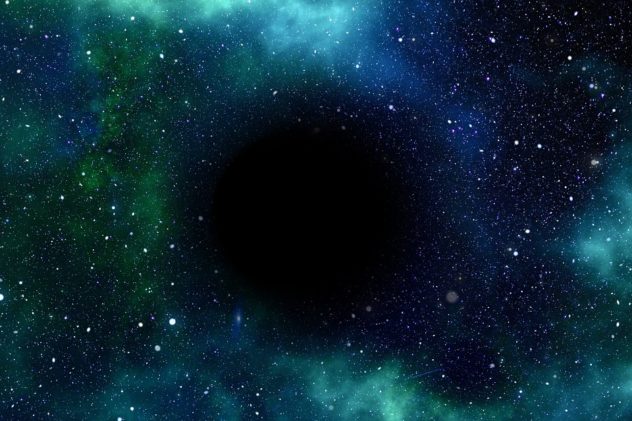Pre-Reading Questions:
- Are you interested in learning space explorations? Why or why not?
- What do you think are black holes?
Vocabulary:
- astonishing /uh-STON-i-shing/
- creation /kree-EY-shuhn/
- identify /ahy-DEN-tuh-fahy/
- movement /MOOV-muhnt/
- incredible /in-KRED-uh-buhl/
[adjective] very surprising
It was the beginning of an astonishing 12-year friendship.
[noun] the act of creating something, or the thing that is created
She had been with the company since its creation in 1990.
[verb] to recognize someone or something and say or prove who or what that person or thing is
Police will have the pictures enlarged in an attempt to identify the thief.
[noun]a change of position
There will be no movement of cars on the road this holiday season.
[adjective] impossible, or very difficult, to believe
It’s incredible how fast computers have become a normal part of our daily lives.
It is very implausible not to say astonishing words when capturing photos of space. The pictures of planets, galaxies, asteroids, and nebulas can affirm that these are wonderful creations — a combination of science and art. And most of our scientists and astronomers are still looking for new celestial bodies that make us astound and sometimes anxious.
A new black hole 1,000 light-years away was confirmed by a group of astronomers from Earth, the closest celestial neighbor that we have so far. Scientists from the European Southern Observatory (ESO) in Chile find out that the cosmic body that they identified is a black hole. They based it on a new study published in Astronomy and Astrophysics, by following the movement of its neighboring stars.
Scientists were trying to know the bizarre behavior of the two stars in a system called HR 6819. Both of the stars are in the same system and identical in mass and size, but it moves separately. Thomas Rivinius, an ESO scientist who conducted the study, said: “One of them is rotating very rapidly, so much that it’s almost flying apart ”. They were interested in this two-star system for years. Some of them are thinking that there may be another object nearby, causing the two stars to move variously.
After years of deliberation, Rivinius and his team decided to analyze with ESO’s La Silla Observatory. They realized that the stars seemed to be orbiting around a celestial object that was about four times or as colossal as the Sun. But as when they checked it for the first time, there was not anything in the midpoint of the system, either a star that is hard to see or a black hole. “We could exclude any type of star with that mass being present,” says Rivinius. “So if there’s something with that mass in the system, it must be a black hole.”
There’s nothing to be afraid about black holes. Even though the system is extremely near to the Earth, this black hole is a thousand light-years away from the Earth to become a threat. In spite of this, it is incredible that there might be even more black holes dispersed all over the universe- and even our galaxy.
A new black hole 1,000 light-years away was confirmed by a group of astronomers from Earth, the closest celestial neighbor that we have so far. Scientists from the European Southern Observatory (ESO) in Chile find out that the cosmic body that they identified is a black hole. They based it on a new study published in Astronomy and Astrophysics, by following the movement of its neighboring stars.
Scientists were trying to know the bizarre behavior of the two stars in a system called HR 6819. Both of the stars are in the same system and identical in mass and size, but it moves separately. Thomas Rivinius, an ESO scientist who conducted the study, said: “One of them is rotating very rapidly, so much that it’s almost flying apart ”. They were interested in this two-star system for years. Some of them are thinking that there may be another object nearby, causing the two stars to move variously.
After years of deliberation, Rivinius and his team decided to analyze with ESO’s La Silla Observatory. They realized that the stars seemed to be orbiting around a celestial object that was about four times or as colossal as the Sun. But as when they checked it for the first time, there was not anything in the midpoint of the system, either a star that is hard to see or a black hole. “We could exclude any type of star with that mass being present,” says Rivinius. “So if there’s something with that mass in the system, it must be a black hole.”
There’s nothing to be afraid about black holes. Even though the system is extremely near to the Earth, this black hole is a thousand light-years away from the Earth to become a threat. In spite of this, it is incredible that there might be even more black holes dispersed all over the universe- and even our galaxy.
Comprehension Questions:
- What celestial object 1,000 light-years away from Earth is identified by a group of astronomers?
- What agency is responsible for identifying the black hole?
- Who is the scientist that started the study about the black hole near Earth?
- What is the system that the two stars belong to?
- According to the article, why should we not worry about this black hole?
Discussion Questions:
- What is your opinion about this discovery?
- Do you think the distance of the black hole is enough to say that our planet is safe? Why or why not?
- Do you believe that black holes can be used to travel to another galaxy? Why or why not?
- Have you watched or read news about space? Please share with us what you know.
- What other celestial bodies would like to learn in the future? Please explain your answer.
